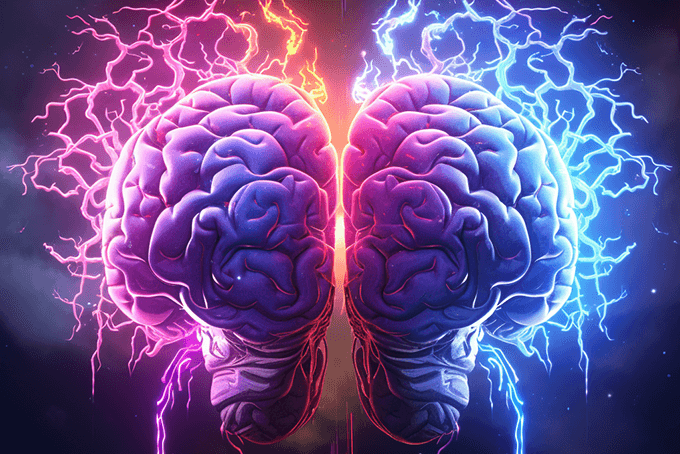In today’s rapidly changing world, the ability to learn and adapt quickly is paramount. While traditional educational methods have their merits, harnessing the power of intuitive learning can give individuals a distinct advantage. In this article, we will delve into the concept of intuitive learning, explore the science behind it, highlight its benefits, share strategies for enhancing intuitive learning, and discuss ways to overcome challenges that may arise. By the end, you’ll have a deeper understanding of how to tap into your innate intuition as an intuitive learner.
Understanding the Intuitive Learner
Before we can fully grasp the potential of intuitive learning, it’s important to understand what it entails. Intuitive learning is an approach that emphasizes relying on one’s instincts, gut feelings, and tacit knowledge to make sense of new information and solve problems. It goes beyond the traditional reliance on rational and analytical thinking. Intuitive learners are those who naturally gravitate towards this approach and are often characterized by certain traits.
Defining Intuitive Learning
Intuitive learning, at its core, involves tapping into the subconscious mind to access information that may not be immediately available to conscious awareness. It is a way of learning that transcends logical reasoning and draws upon patterns, insights, and hunches that arise spontaneously. This approach allows learners to tap into their inherent creativity and make connections that might otherwise go unnoticed.
Characteristics of Intuitive Learners
Intuitive learners possess several key traits that set them apart from their peers. They often have a heightened sense of curiosity, exhibiting a desire to explore new ideas and concepts. They are open-minded, embracing ambiguity and uncertainty rather than shying away from it. Intuitive learners are also comfortable with taking risks, as they understand that failure is an essential part of the learning process. These individuals are often known for their imaginative thinking and their ability to think outside the box.
One fascinating aspect of intuitive learners is their ability to tap into their subconscious mind. This allows them to access a vast reservoir of knowledge that may not be immediately accessible to others. It’s as if they have a secret library tucked away in their minds, filled with insights and connections waiting to be discovered. This subconscious knowledge often manifests itself in the form of sudden “aha” moments or intuitive leaps of understanding.
Moreover, intuitive learners have a unique way of perceiving the world around them. They have a keen eye for patterns and connections that others may overlook. It’s as if they have a sixth sense for detecting hidden relationships and uncovering the underlying structure of complex concepts. This ability to see beyond the surface level enables them to make insightful observations and come up with innovative solutions to problems.
The Science Behind Intuitive Learning
While intuitive learning may seem mystical, there is a scientific basis for it. Researchers have discovered that the brain plays a crucial role in intuitive learning, with specific regions activated when individuals rely on their intuition. These regions include the anterior cingulate cortex, the insular cortex, and the basal ganglia. They are responsible for integrating external stimuli, emotions, and past experiences, allowing the brain to generate quick and instinctive responses.
The Role of the Brain in Intuitive Learning
During intuitive learning, the brain effortlessly processes information in the background, outside of conscious awareness. This automatic processing frees up cognitive resources, enabling learners to focus on the task at hand without getting bogged down by excessive analytical thinking. This streamlined approach facilitates faster decision-making and encourages a more fluid learning experience.
Intuition vs. Rational Thinking in Learning
Intuitive learning is not meant to replace rational thinking but rather to complement it. Both approaches have their place in the learning process, and by harnessing the power of intuition, learners can unlock their full potential. Rational thinking allows for careful analysis and logical reasoning, while intuition provides the ability to swiftly navigate complex situations and tap into tacit knowledge.
Furthermore, studies have shown that individuals who actively engage in intuitive learning tend to exhibit higher levels of creativity and innovation. By tapping into their intuition, learners can think outside the box, coming up with novel solutions to problems that may have stumped them using traditional analytical methods. This creative aspect of intuitive learning is particularly valuable in fields that require constant innovation and adaptability.
The Influence of Emotions on Intuitive Learning
Another fascinating aspect of intuitive learning is the role of emotions in the process. Emotions can act as signals that guide intuitive decision-making, providing valuable insights that may not be immediately apparent through rational analysis alone. When learners trust their gut feelings and emotional responses, they can harness the power of their subconscious mind, leading to more holistic and nuanced learning outcomes.
Benefits of Intuitive Learning
The advantages of intuitive learning extend to both individual learners and group dynamics. By embracing this approach, learners can experience enhanced problem-solving abilities, improved creativity, and a deeper understanding of complex subjects. Additionally, intuitive learning can foster a sense of self-confidence and empower individuals to trust their instincts, leading to greater self-discovery and personal growth.
Intuitive learning is not just about acquiring knowledge; it’s about developing a holistic approach to learning that integrates cognitive, emotional, and sensory experiences. This multifaceted learning style allows individuals to engage with information on a deeper level, making connections that might not be immediately obvious through traditional learning methods.
Advantages for Individual Learners
For individual learners, honing their intuitive learning skills can yield numerous benefits. It allows them to navigate uncertain situations with ease, make quick and informed decisions, and gain a deeper understanding of complex concepts. Intuitive learners often find themselves more adaptable and resilient, as they can quickly adjust to changing circumstances.
Moreover, intuitive learning encourages individuals to embrace ambiguity and uncertainty as opportunities for growth rather than obstacles to overcome. This mindset shift not only enhances their problem-solving skills but also nurtures a sense of curiosity and a willingness to explore new ideas without fear of failure.
Impact on Group Learning Dynamics
In group learning settings, intuitive learners can positively influence the overall dynamics. They bring fresh perspectives and innovative ideas to the table, challenging conventional approaches and encouraging others to think outside the box. By fostering an environment that embraces intuition, groups can tap into the collective wisdom and diverse knowledge of its members.
Furthermore, the presence of intuitive learners in group settings can promote collaboration and empathy among members. Their ability to read the room, understand unspoken cues, and empathize with different perspectives can help bridge communication gaps and foster a more inclusive learning environment where everyone feels valued and heard.
Strategies for Enhancing Intuitive Learning
To fully unleash the power of the intuitive learner, certain strategies can be employed both by teachers and educators as well as by individual learners themselves. By implementing these techniques, learners can further develop their intuitive skills and make the most of their innate abilities.
Intuitive learning is a multifaceted process that involves tapping into one’s inner wisdom and gut feelings to make connections and understand complex concepts. It goes beyond traditional rote memorization and encourages learners to trust their instincts and embrace ambiguity.
Techniques for Teachers and Educators
Teachers and educators can play a pivotal role in nurturing intuitive learning. By incorporating interactive and experiential learning activities into their curriculum, they can provide opportunities for students to tap into their intuition. Encouraging reflective practices, such as journaling or self-assessment, can also enhance the development of intuitive skills in learners.
Furthermore, creating a supportive and open-minded learning environment where students feel comfortable expressing their thoughts and ideas can foster a sense of trust in their intuition. Teachers can also incorporate real-world examples and case studies that challenge students to think critically and rely on their intuitive insights.
Self-help Tips for Intuitive Learners
Intuitive learners can take proactive steps to enhance their own learning experience. Engaging in mindfulness practices, such as meditation or deep breathing exercises, can help quiet the mind and access deeper levels of intuition. Keeping a learning journal to record insights, observations, and reflections can also facilitate the development and refinement of intuitive skills.
In addition to mindfulness practices, intuitive learners can benefit from seeking out diverse perspectives and engaging in discussions with peers to broaden their understanding of different viewpoints. This exposure to varying opinions can challenge their assumptions and deepen their intuitive insights.
Overcoming Challenges in Intuitive Learning
Despite the numerous benefits, intuitive learning may face challenges and misconceptions that can hinder its adoption. By addressing these barriers head-on, learners and educators can create a more conducive environment for intuitive learning to flourish.
Common Misconceptions about Intuitive Learning
One common misconception about intuitive learning is that it is solely based on guesswork and lacks a solid foundation. In reality, intuitive learning is not about guesswork but about tapping into deep-seated knowledge and making connections. It draws on a combination of past experiences, cultural conditioning, and innate wisdom.
Dealing with Skepticism and Resistance
Intuitive learning may be met with skepticism or resistance within traditional learning environments. To overcome this, it is essential to educate others about the benefits of intuitive learning and provide evidence-based examples of its success. By encouraging open dialogue and fostering an environment that values diverse learning styles, the resistance towards intuitive learning can be diminished.
Conclusion
Unleashing the power of the intuitive learner is a journey that requires openness, self-reflection, and a willingness to embrace uncertainty. By understanding the essence of intuitive learning, recognizing the characteristics of intuitive learners, and implementing strategies to enhance it, individuals can tap into their innate potential. As we continue to navigate an ever-evolving world, embracing intuitive learning will empower us to adapt, innovate, and thrive.
You might want to read:



